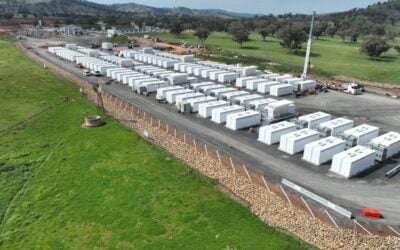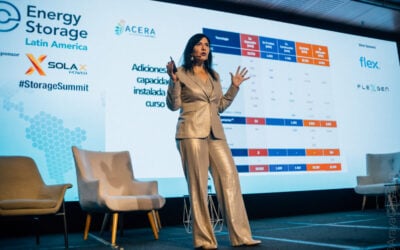Integrating and balancing DG resources is both a challenge and opportunity for companies like Eneco, Autogrid’s Mark Chew said. Image: Eneco.
A US company which analyses Big Data for energy applications has claimed a world first with its involvement in a Dutch project to integrate multiple distributed energy resources into a single system.
Autogrid, headquartered in the US but also active in Asia and Europe, analyses large volumes of data in energy networks and provides tailored solutions for customers that include big utilities like Southern California Edison and Germany’s E.On.
The company also serves customers in related fields such as demand response that also require the collection and processing of Big Data to do things such as analyse performance, predict expected patterns of energy consumption and to control or automate services.
For the recent project, Autogrid worked with Dutch electricity and gas supplier Eneco to build what has been described by the two partners as “the world’s first software-defined power plant”.
Try Premium for just $1
- Full premium access for the first month at only $1
- Converts to an annual rate after 30 days unless cancelled
- Cancel anytime during the trial period
Premium Benefits
- Expert industry analysis and interviews
- Digital access to PV Tech Power journal
- Exclusive event discounts
Or get the full Premium subscription right away
Or continue reading this article for free
What could also be described as another kind of “virtual power plant” integrates multiple distributed resources, adding up to 100MW of dispatchable resources including CHP and industrial demand response to Eneco’s portfolio. It has been built on Autogrid’s Predictive Controls platform, and will help integrate renewables, partly because its capability to respond to pricing signals from the Dutch transmission system operator’s (TSO’s) wholesale markets will help pay for the balancing costs.
Autogrid product manager Mark Chew, who specialises in energy Internet of Things (IoT) analytics, told PV Tech Storage that his company had observed the need to balance various sources of distributed generation (DG), including the variable output of solar and wind energy as a quickly expanding trend around the world.
“The overarching trend that we’ve seen is more solar, wind, storage, thermostats, lighting we’ve seen a lot of distributed energy resources added to the grid. Then we’ve seen as those resources are getting deployed, sometimes the utility is happy about it, sometimes they’re not, we’ve seen the role of utilities is changing from just a supplier of a flow of electrons to service providers who have this responsibility for dealing with this intermittency that’s produced by renewables and managing the grid to ensure optimal meeting of supply and demand,” Chew said.
Challenges and opportunities for utilities and grid operators
Chew said these DG resources were presenting both a challenge and an opportunity to utilities and organisations which manage grids, the main challenge being to accurately forecast how much resources would be available and when, “then they want to be able to control all those devices”.
Leaving aside the costs of deploying the distributed energy resources themselves, aggregating and managing them from control centres can be economically competitive against conventional resources for utilities and grid operators, according to Chew.
“The cost to put in a VPP, software that can dispatch and control distributed resources as if they were conventional generation, is a fraction of the cost of building a new power plant, or putting in peaker plants. Plus the utility doesn’t have to buy new hardware, they can use [a] scalable cloud based solutions, there are no emissions, they have it distributed across their grid, so its not limited to one place.”
Eneco’s head of portfolio management, Michel Engelen, said deploying distributed energy resources was one of the most cost-effective ways to achieve the integration of renewables into networks, and to help further the company’s core strategy of environmental sustainability.
“By offering us increased control over our flexible portfolio, AutoGrid’s Software Defined Power Plant enables us to integrate alternative flexible energy resources into our portfolio and subsequently a larger amount of intermittent renewables, helping our customers reduce their energy costs and helping us get a higher return on our renewable assets,” Engelen said.





